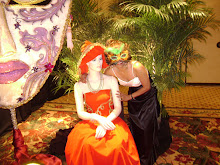I am inspired to write this blog as I was responding to an expertise request on the possibility of building a corporate identity – is there such a thing as a real corporate identity or is all of this just a make believe created through messages and logos?
While I am sure that is a lot written on the subject, I am putting forward my personal convictions based on over fifteen years of working in both large and small corporations and having seen firsthand how identity can build trust, dedication and success, not only at corporate level but on project levels as well.
Firstly, we must define what we mean by corporate identity. Let’s think of ourselves for a moment. We are all consumers and as consumers our favorite food, clothing or cosmetics are brand driven most if not all of the time and very often when we talk about these things we identify them by their brands. We are loyal to the brands that work for us. Well, that’s how we must begin to think about corporate identity. A corporate identity that goes beyond the logo and tag line is what is needed to ensure corporate culture.
Many of us can recognize our company’s logo and the mission statement but sadly, there is not much personal identification with those two things and this is predominantly why there fails to be a corporate culture. Building corporate culture is simple and really does not need the fancy models and high consulting fees. Any smart organization with great internal communicators and strong leadership with a desire to truly engage its people and build corporate identity hand in hand with a winning operating culture can be the architects of their company’s culture.
Let’s pause for a moment and reflect on the following questions – what has more meaning to you: is it that system you constructed after meeting with its users and getting all their input or a system handed to you with the expectation that you learn to use it and adapt to its quirks? I would imagine your answer is the former as there is personal gratification as well knowing that the users are happy because it fits all their needs and they identify with its values. The other system will take a long time to create user identification while generating discontent and distance – association with becomes an uphill battle. The same is how we can think of corporate identity and corporate culture.
So my simple recommendation for really igniting your employees into fueling the fire of your corporate culture is make them part of the process of creating the corporate values. Having a logo – that image that represents who you are without words and that mission statement that qualifies what you stand for is the beginning of building your culture. With those two things in place, gather your employees depending on the size of your company; you can have groups based on area of work if the numbers are manageable or you can use your intranet if the company is a large one. Build strategic questions and discussions around what your employees would like their company’s culture to be. What would make them feel associated with the company’s service or product? You may find those in the manufacturing area talking about quality; those in packaging talking about speed; those at customer service talking about attention and fast response; those in administration may talk about efficiency and impeccable execution. Use the flip camera and go around campus, get them on video talking about why or what makes them feel part of the company. Get your internal and external communicators involved – let them moderate the sessions, gather the info and you will soon be on the road to creating your company’s culture with your employees’ input. Once you roll out the final values – be them five or seven, they will represent what your employees identified with – how they see the value of the company.
After the exercise above, I will ask you to take the company values one step further into embedding it into the culture. Incorporate them into your biannual or annual appraisal reviews. Have employees cite an example of how they accomplished “impeccable execution” and so on based on your final list values. Place posters of the values in strategic locations where people gather. Create internal promotional pieces with your messages of your values.
Take caution to ensure that your new employees also have a way of becoming identified with your company’s values. Excited employees will be your best ambassadors at telling the stories and getting others on board. Build your reward system based on the company values as well. And, remember your communicators must constantly look for the avenues to consistently deliver messages around the company’s culture.
Communicators must ensure that senior management is seen and heard living and talking about the values as well. Encourage townhalls, breakfast with the leaders – be creative – make your people feel like it’s their own business.
The end result of all this is simply one thing: success! Dedicated and passionate employees who feel that they are part of what the company stands for do no harm but only generate great service, quality work and they will take pride in what they do. That’s good for the bottom line and future growth!





